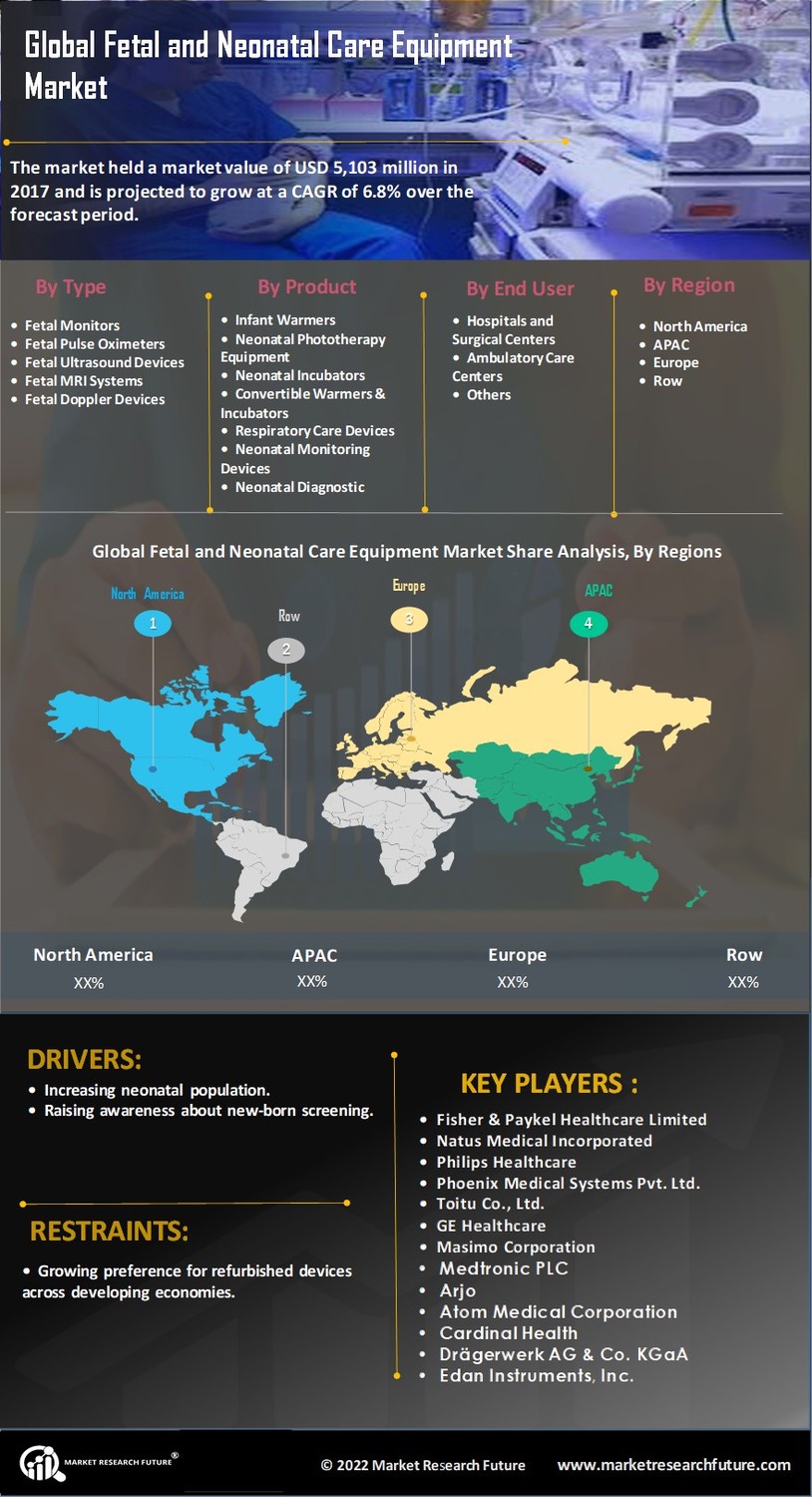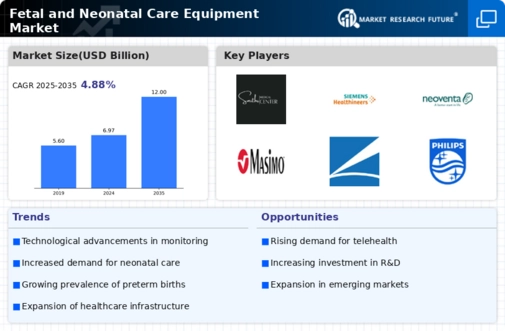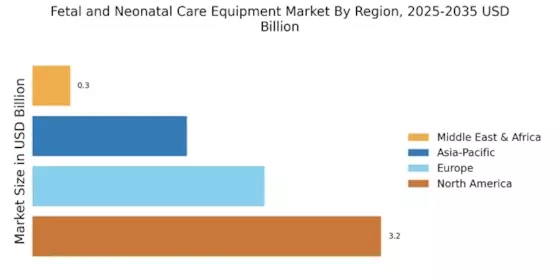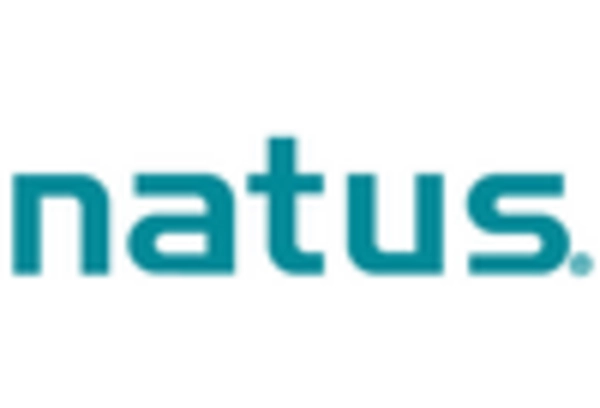Rising Incidence of Preterm Births
The Fetal and Neonatal Care Equipment Market is significantly influenced by the rising incidence of preterm births, which has been a growing concern in recent years. According to health statistics, approximately 15 million infants are born preterm each year, necessitating specialized care and equipment. This trend underscores the need for advanced neonatal care solutions, including incubators, ventilators, and monitoring systems designed specifically for premature infants. As healthcare providers strive to improve survival rates and reduce complications associated with preterm births, the demand for high-quality fetal and neonatal care equipment is expected to increase. This growing need presents a substantial opportunity for manufacturers and suppliers within the industry.
Growing Awareness of Maternal and Infant Health
The Fetal and Neonatal Care Equipment Market is witnessing a heightened awareness of maternal and infant health issues, which is driving demand for specialized equipment. Educational campaigns and initiatives aimed at improving prenatal and postnatal care are becoming more prevalent, leading to increased utilization of fetal monitoring devices and neonatal care solutions. Healthcare providers are increasingly prioritizing the health of mothers and infants, which is reflected in the rising sales of equipment designed to monitor and support fetal and neonatal health. This trend is expected to continue, as more healthcare facilities adopt advanced technologies to ensure better outcomes for mothers and their newborns, thereby propelling the market forward.
Increased Investment in Healthcare Infrastructure
The Fetal and Neonatal Care Equipment Market is benefiting from increased investment in healthcare infrastructure across various regions. Governments and private entities are recognizing the importance of maternal and infant health, leading to enhanced funding for hospitals and clinics. This investment often translates into the procurement of advanced fetal and neonatal care equipment, which is essential for providing high-quality care. For example, many countries are expanding their neonatal intensive care units (NICUs) to accommodate the growing number of high-risk pregnancies. As a result, the market for fetal and neonatal care equipment is projected to grow at a compound annual growth rate (CAGR) of around 7% over the next few years, driven by these infrastructural developments.
Regulatory Support and Standards for Quality Care
The Fetal and Neonatal Care Equipment Market is positively impacted by regulatory support and the establishment of standards aimed at ensuring quality care for mothers and infants. Regulatory bodies are increasingly focusing on the safety and efficacy of medical devices, which has led to the development of stringent guidelines for fetal and neonatal care equipment. Compliance with these regulations not only enhances the credibility of manufacturers but also instills confidence among healthcare providers. As a result, the market is likely to see a rise in the adoption of certified equipment that meets these standards. This regulatory environment fosters innovation and encourages investment in the development of new technologies, further driving growth in the fetal and neonatal care equipment market.
Technological Advancements in Fetal and Neonatal Care Equipment
The Fetal and Neonatal Care Equipment Market is experiencing a surge in technological advancements that enhance the quality of care provided to infants and mothers. Innovations such as advanced imaging techniques, non-invasive monitoring systems, and telemedicine solutions are becoming increasingly prevalent. For instance, the integration of artificial intelligence in monitoring equipment allows for real-time data analysis, which can lead to timely interventions. The market for fetal monitoring devices alone is projected to reach approximately USD 2 billion by 2026, indicating a robust growth trajectory. These advancements not only improve clinical outcomes but also streamline workflows in healthcare settings, thereby driving the demand for sophisticated fetal and neonatal care equipment.


















Leave a Comment